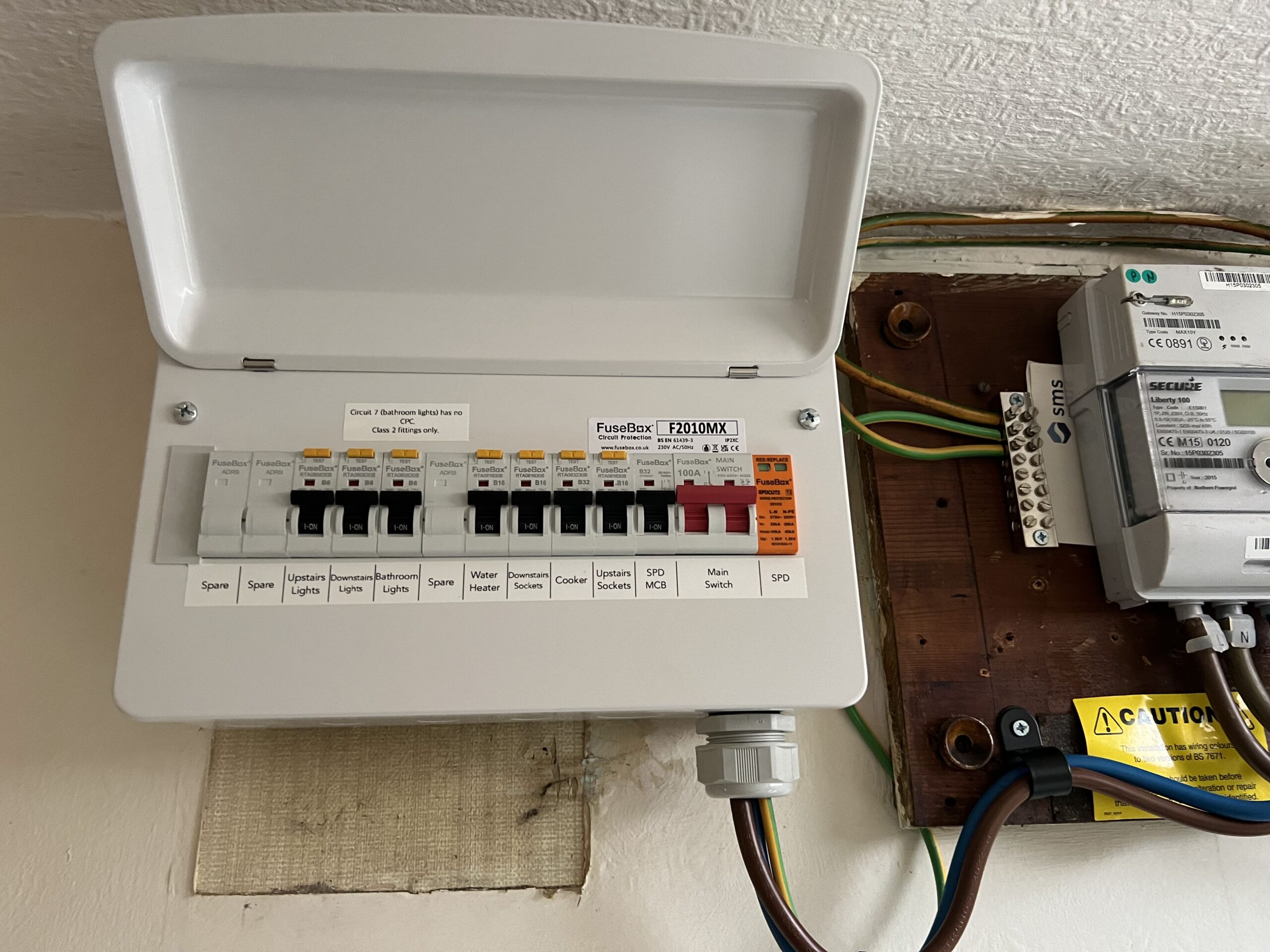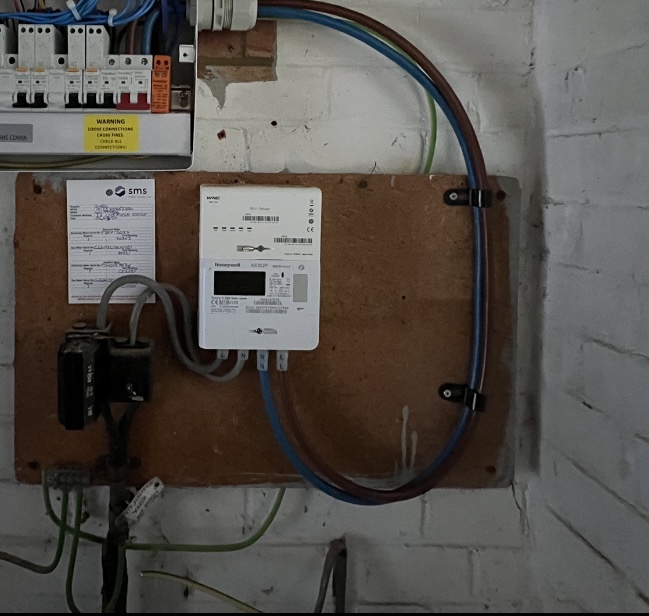There’s a lot going on when it comes to an electrical installation, understanding whats what and how everything works can leave you a little bewildered. We want to explain the basics to hopefully make things a little more understandable.
Incoming supply – This is the electricity supply coming into the property. The first point is the main cutout, normally a 60 or 80 amp fuse followed by your electricity meter. This part of the system is owned and maintained by the DNO, or Distribution Network Operator. If there are any issues with this, the DNO would be contacted to come and repair any faults.
Fuse board/Consumer Unit – This is the part that feeds each individual circuit in your property. This will have all of the protective devices (see below) and often the main point of isolation for the property.
Protective devices – This term covers devices that are often fitted in the Consumer Unit and protect each circuit & cable in your property. The most common devices are;
MCB or Mini Circuit Breaker – These are what’s often called a ‘fuse’. They will detect overload or fault on a circuit and break the supply if required. These are also fitted to protect a cable from being overloaded.
RCD or Residual Current Device – These monitor the current going in and out of a circuit, if there is a leakage of current somewhere in the circuit then these will break the supply. These will often protect a group of circuits together, if one has a fault it would turn off the whole group of circuits.
RCBO or Residual Current Circuit Breaker with Overcurrent Protection (Catchy name!) – These combined the RCD and MCB into one device. Meaning if there is a earth fault for example, it would only turn off the individual circuit.
After the ‘fuse box’ we have the final circuits. These will be divided up and supply your house or property with power for lights, sockets, electric ovens, hobs, water heaters and devices such as Electric Vehicle Chargers. Each circuit will be ran in a particular cable size suitable for its use.
Hopefully that gives you a bit of an understanding regarding the initial supply and devices installed in your property along with what they’re doing. Stay tuned for a future post going into a little more detail about your electrical installation!









